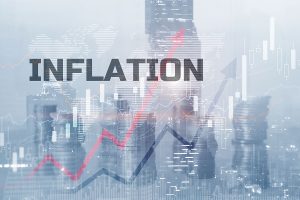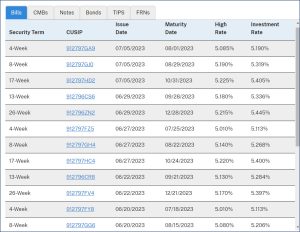Posted on Friday, 8th September 2023 by Dennis Damp
 Print This Post
Print This Post
The Postal Service Health Benefits (PSHB) Program will replace Federal Employees Health Benefit (FEHB) Program coverage for eligible Postal Service employees, Postal Service annuitants, and their eligible family members starting in 2025.
This new separate program, within the Federal Employees Health Benefits (FEHB) Program, is administered by the Office of Personnel Management (OPM). One of the key elements of this new plan is the requirement for those under a certain age to sign up for Medicare Part B to retain their PSHB health care coverage in retirement.
This requirement could be added to
federal employee’s FEHB Plans down the road.
Postal Service Financial Reforms
Public Law 117–108—APR. 6, 2022, provides stability to and enhance the services of the United States Postal Service. Title One, Section 101 establishes the Postal Service Health Benefits Program (PSHB). There are significant changes, especially for those approaching 65 with this new plan.
Eligible Postal Service employees and Postal Service annuitants must enroll in a PSHB plan during the PSHB Program Open Season in late 2024. Postal Service employees and Postal Service annuitants currently enrolled in FEHB plans who do not enroll in a new PSHB plan during Open Season in 2024 will automatically be enrolled in a PSHB plan.
Other Insurance & Benefit Programs
Fortunately, enrollment in a PSHB plan will not impact or disrupt enrollment in other insurance and benefits programs, including:
- Federal Employees Dental and Vision Insurance Program (FEDVIP)
- Federal Flexible Spending Account Program (FSAFEDS)
- Federal Employees’ Group Life Insurance (FEGLI), or
- Federal Long Term Care Insurance Program (FLTCIP)
The New Medicare Part B Participation Requirement
There are two sets of rules to follow concerning Medicare enrollment, one for those still employed and another for annuitants. The rules are also based on age at the time of retirement.
The requirement to sign up for Medicare Part B is limited to postal employees that retire on or after January 1, 2025, and you are under 64, you WILL BE required to enroll in Medicare Part B when you become entitled to Medicare Part A (typically at age 65) to remain enrolled in a PSHB plan.
There are two fact sheets published by OPM for active employees and annuitants, the following information is excerpted from these documents.
USPS Active Employee Requirements
If you are an active employee age 64 or older as of January 1, 2025, you ARE NOT required to enroll in Medicare Part B to continue your PSHB health insurance coverage once you retire. However, upon your retirement and entitlement to Medicare Part A (typically at age 65), you will have the option to enroll in Medicare Part B during a special enrollment period.
- If you are the primary subscriber, your covered family members will not be required to enroll in Medicare Part B to stay on your PSHB plan; however, enrollment in Medicare Part B may reduce your overall costs for health care-related expenses and may provide better value for you and your family.
If you are an active employee under the age of 64 as of January 1, 2025, to continue your PSHB health insurance coverage in retirement, you WILL BE required to enroll in Medicare Part B after you retire and become entitled to Medicare Part A (typically at age 65).
- If you are the primary PSHB enrollee, your covered family members will also be required to enroll in Medicare Part B when you retire, upon their entitlement to Medicare Part A, if they wish to remain covered by your PSHB insurance.
- If you retire on or after January 1, 2025, and you are under 64, you WILL BE required to enroll in Medicare Part B when you become entitled to Medicare Part A (typically at age 65) to remain enrolled in a PSHB plan. The Social Security Administration (SSA) will mail you a notice when you are eligible to enroll in Medicare Part B during your initial enrollment period. Your initial enrollment period starts three months prior to your 65th birthday and ends three months after your 65th birthday. If you are the primary PSHB subscriber, your covered family members will also be required to enroll in Medicare Part B upon their entitlement to Medicare Part A, if they wish to remain covered by your PSHB insurance.
There are exceptions to the requirement to enroll in Medicare Part B as an annuitant. These exceptions will also apply to your covered family members. Annuitants may be responsible for providing proof of eligibility for the applicable exception(s) to the designated agency. These exceptions are:
- You are residing outside of the United States and its territories. You are required to follow the policy and procedure set forth by the Postal Service to be eligible for this exception; or
- You are enrolled in health care benefits provided by the Department of Veterans Affairs; or
- You are eligible for health services provided by Indian Health Services.
USPS Annuitant’s Requirements
If you are an annuitant as of January 1, 2025, and not currently participating in Medicare Part B, you ARE NOT required to enroll in Medicare Part B to continue your health insurance coverage in the new PSHB Program. Participation in Medicare Part B is voluntary; however, enrollment in Medicare Part B may reduce your overall costs for health care-related expenses and may provide greater value.
- Your covered spouse and eligible family members will also not be required to enroll in Medicare Part B even if they are age 65 or older; however, enrollment in Medicare Part B may reduce overall costs for health care-related expenses and may provide greater value.
- Note: If you are an annuitant as of January 1, 2025, and are already enrolled in Medicare Part B, you ARE required to remain enrolled in Medicare Part B to continue coverage under PSHB.
If you are an annuitant entitled to Medicare Part A (typically at age 65) prior to January 1, 2024, and have not enrolled in Medicare Part B, you and your covered, eligible family members may be able to participate in the special enrollment period (SEP) for Medicare Part B that starts on April 1, 2024. Those who enroll during the SEP will not need to pay the late enrollment penalty. Eligibility letters will be sent to annuitants and eligible family members in early 2024.
If you retire between October 31, 2024, and December 31, 2024, and are entitled to Medicare Part A (typically at age 65), you will have the option to enroll in Medicare Part B during a specific eight-month special enrollment period immediately following your retirement date. If you wish to enroll, you MUST contact the Social Security Administration (SSA) to initiate enrollment if you are over the age of 65.
As a general rule, spousal and family member PSHB coverage is based on the primary subscriber’s eligibility. If the primary subscriber is not required to join Medicare Part B, neither will dependent family members.
Additional Information
- PSHB Overview
- USPS Employee’s Fact Sheet
- Information for Employees
- USPS Annuitant’s Fact Sheet
- Information for Annuitants
Helpful Retirement Planning Tools
- Retirement Planning for Federal Employees & Annuitants
- The Ultimate Retirement Planning Guide – Start Now
- Deciding When To Retire – A 7-Step Guide
- Annuity Expectations – Before and After
- Master Retiree Contact List
- TSP Guide

Disclaimer: The information provided may not cover all aspect of unique or special circumstances, federal regulations, medical procedures, and benefit information are subject to change. To ensure the accuracy of this information, contact relevant parties for assistance including OPM’s retirement center. Over time, various dynamic economic factors relied upon as a basis for this article may change.
The advice and strategies contained herein may not be suitable for your situation and this service is not affiliated with OPM or any federal entity. You should consult with a financial, medical or human resource professional where appropriate. Neither the publisher or author shall be liable for any loss or any other commercial damages, including but not limited to special, incidental, consequential, or other damages.
Tags: FEHB, Health Care, Medicare Part B, New Health Care System for Postal Employees, PSHB
Posted in BENEFITS / INSURANCE, RETIREMENT CONCERNS, SOCIAL SECURITY / MEDICARE, SURVIVOR INFORMATION
Comments (2)|  Print This Post
Print This Post








